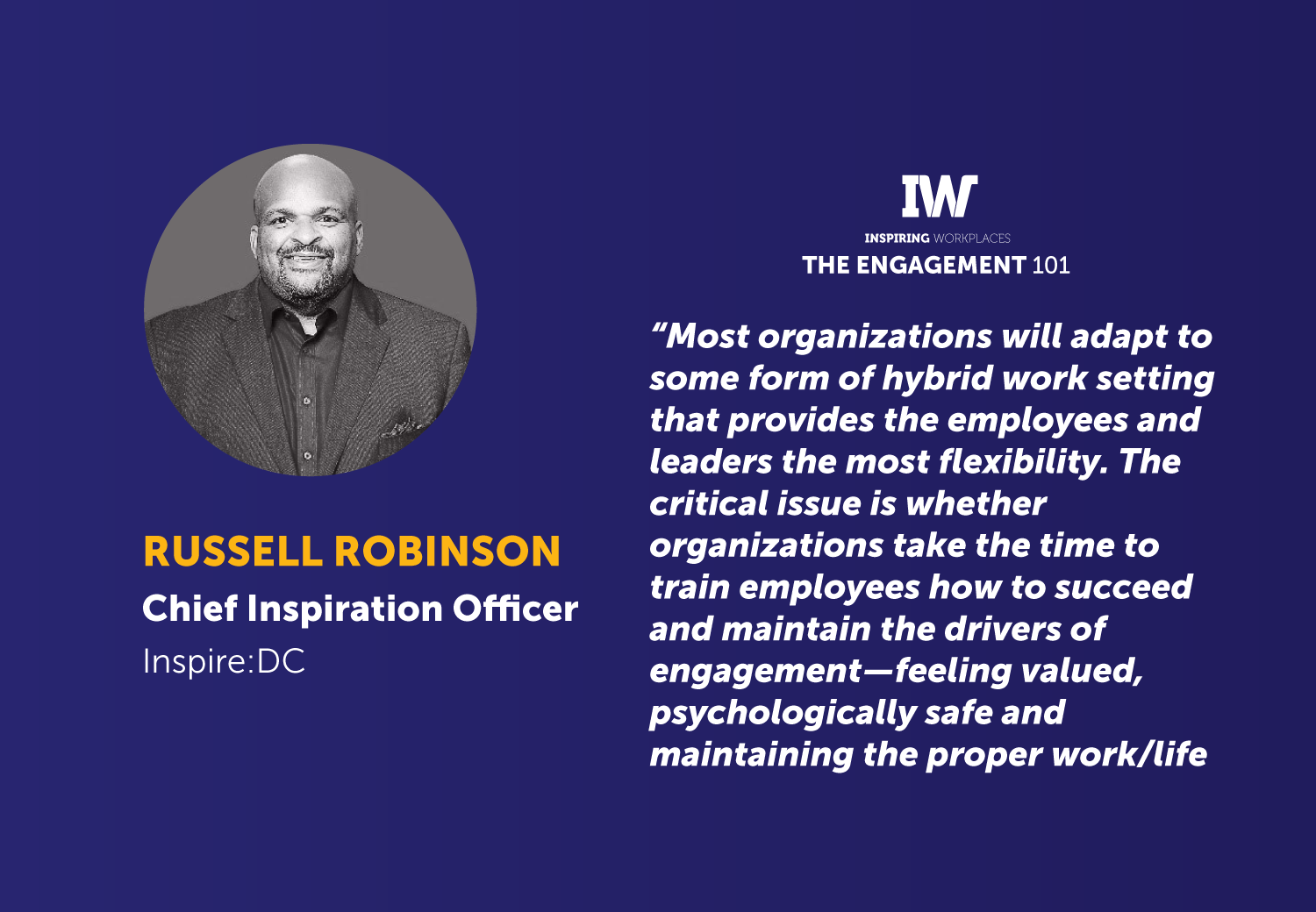
24th May 2021
How to return to the workplace (or not) – in a post covid world – Russell Robinson

This snippet is part of our Ebook How to return to the workplace (or not) – in a post covid world. Advice and suggestions from our Top 101 influencers. You can download the full eBook with all the advice here.
Russell Robinson, EdD, Chief Inspiration Officer, Inspire:DC
Organizations should do their due diligence before deciding what the return to office entails. This means organizations should talk to employees, customers, and other stakeholders, like union representatives and government officials, if applicable. The goal is to hear from all collective voices and gather appropriate data so leaders can make the best decision. Decisions in a vacuum, like what was articulated by the CEO of WeWork can have tragic impacts on an organization’s bottom line and morale.
The answer is some form of hybrid workplace. Some organizations will lean towards a 100% virtual environment, and others will lean toward a 100% return to a physical office. However, I think most organizations will adapt to some form of hybrid work setting that provides the employees and leaders the most flexibility. The critical issue is whether organizations take the time to train employees how to succeed and maintain the drivers of engagement—feeling valued, psychologically safe and maintaining the proper work/life balance. Further, organizations will need to train supervisors and managers how to foster connection, performance management and communicate with their staff in this new environment.
The first thing is for organization leaders to not get caught in a vacuum and either start to spiral or make rash decisions. The next step is to start to assess, either through Q&A’s, town halls or pulse surveys, etc., to capture the voices of all the stakeholders. Then decide, and share WHAT the decision is, WHY it matters and HOW the decisions will be accomplished.
I think the “return to the office” model will vary based on each organizations’ model, culture, and goals, etc. However, to be successful, the model and actions must be grounded in sound change management practices. I prefer the Logic model to develop solutions and a change management plan that is heavily grounded in employee voice and over communication.

